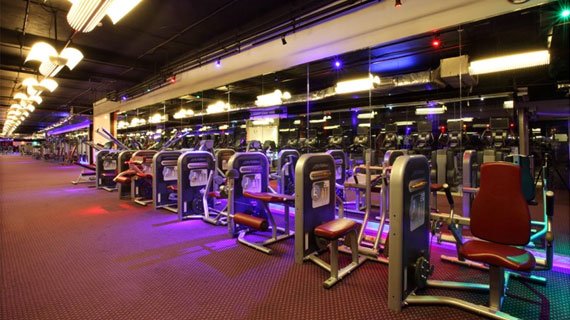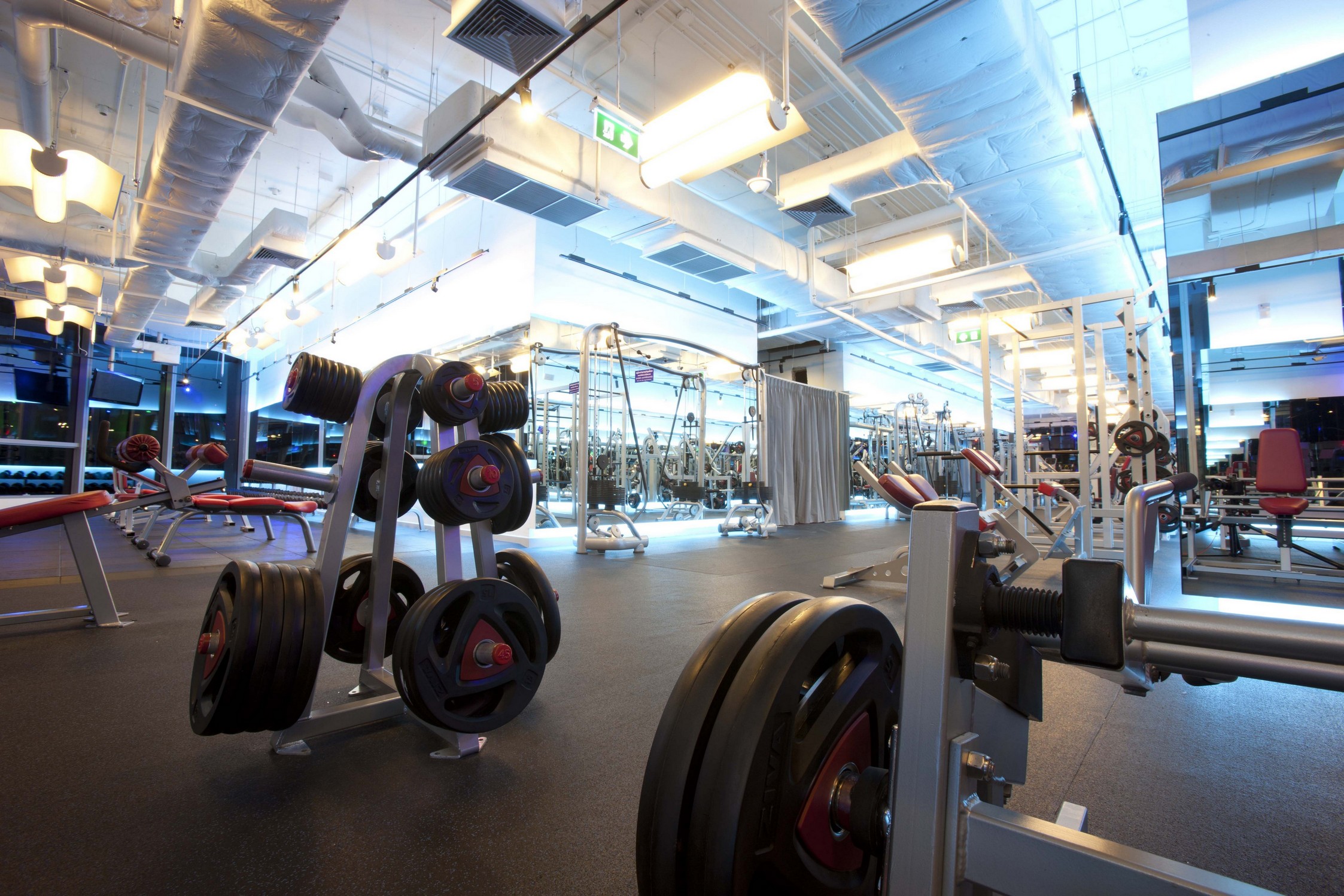Source:- Google.com.pk
True Fitness is defined as "a set of attributes that people have or achieve that relates to the ability to perform physical activity".
This description goes beyond being able to run long distance or lift a lot at the gym. Fitness is more than simply a questions of listing which activities you do or how long you do them for.
Despite being important, these attributes only address single areas of fitness.
This Medical News Today information article provides details on the five main components of physical fitness, which include:
cardiorespiratory endurance muscular strength
muscular endurance
body composition
flexibility
Cardiorespiratory endurance is how our body is able to supply fuel during physical activity via the body's circulatory and respiratory systems.
According to Folsom Lake College2, there are two parts of cardiorespiratory endurance:
How efficient your heart and lungs are at delivering oxygen to your body
How efficient your body is at creating the ATP, or energy, your muscles need in order to contract.
Activites that can help improve your cardiorespiratory endurance include those that cause an elevated and safe heart rate for a sustained period.
These activities include swimming, brisk walking, jogging, and cycling.
It is important to begin these activities slowly and gradually increase the intensity.
The USDHHS defines muscular strength as the ability of muscle to exert force during an activity.
You can strengthen your muscles by making them work against resistance, hence the term "resistance training". A muscle has to be overloaded to be strengthened. This can be achieved by lifting weights.
Alberta Education3 recommends starting with a resistance of around 80 percent of the maximum weight you can lift at one time and doing 3-9 repetitions of this weight through 3-5 sets for effective muscular benefits.
muscular endurance is the ability of a muscle to continue exerting force without tiring out.
According to Dixie State University4, muscular endurance training helps develop the slow twitch fibers in your muscles.
As opposed to hard twitch fibers, slow twitch fibers handle low levels of force over relatively long periods.
Endurance can be improved by cardio-respiratory activities such as jogging, dancing, and cycling.
The relative amounts of muscle, bone, and fat make up body composition, i.e. the body's muscle-bone-fat ratio. Despite someone's weight not changing, that does not mean that their level of fat is the same.
People with a high muscle (lean mass) ratio weigh more than those with the same height and waist circumference who have less muscle. Muscle weighs more per cubic inch of volume than fat.
According to The University of New Mexico5, common methods of calculating body composition include: skinfolds, circumference (girth) measures, hydrostatic weighing, bioelectrical impedance, and near-infrared interactance.
Flexibility is the range of movement across a joint. Flexbility is important because it improves the ability to link movements together smoothly and can help prevent injuries.
The different types of flexibility, according to The Massachusetts Institute of Technology (MIT)6, are:
Dynamic flexibility (also called kinetic flexibility) - dynamic movements of the muscles to allow a limb through its full range of motion in the joints.
Static-active flexibility (also called active flexibility)
Static-passive flexibility (also called passive flexibility)
Perhaps the definition of fitness doesn’t include strength, speed, power, and coordination though that seems rather odd. Merriam Webster’s Collegiate Dictionary defines "fitness" and being "fit" as the ability to transmit genes and being healthy. No help there. Searching the Internet for a workable, reasonable definition of fitness yields disappointingly little. Worse yet, the NSCA, the most respected publisher in exercise physiology, in their highly authoritative Essentials of Strength Training and Conditioning doesn’t even attempt a definition.
For CrossFit the specter of championing a fitness program without clearly defining what it is that the program delivers combines elements of fraud and farce. The vacuum of guiding authority has therefore necessitated that CrossFit’s directors provide their own definition of fitness. That's what this issue of CrossFit Journal is about, our "fitness."
Fitness can be described as a condition that helps us look, feel and do our best. That means being able to rely on your body to perform when you need it to, whether it be doing daily household tasks, enjoying a brisk walk on a beautiful fall day, running a race or bench pressing your own body weight. Only you can set your fitness goals. Your present fitness level, age, health, skills, interest and convenience are among the factors you should consider. If you start out slowly, you may find that a simple success spurs you on to take it to the next level.
The President's Council on Physical Fitness and Sports outlines five basic components to physical fitness:
Heart and lung endurance – The ability to deliver oxygen and nutrients to tissues and to remove wastes throughout sustained periods of time. Long runs and swims are among the methods employed in measuring this component.
Muscular strength – The ability of a muscle to exert force for a brief period of time. Upper-body strength, for example, can be measured by various weight-lifting exercises.
Muscular endurance – The ability of a muscle, or a group of muscles, to sustain repeated contractions or to continue applying force against a fixed object. Push-ups are often used to test endurance of arm and shoulder muscles.
Flexibility – The ability to move joints and use muscles through their full range of motion. The sit-and-reach test is a good measure of flexibility of the lower back and backs of the upper legs.
Body composition – Often considered a component of fitness. It refers to the makeup of the body in terms of lean mass (muscle, bone, vital tissue and organs) and fat mass. A particular ratio of fat to lean mass is an indication of fitness, and the right types of exercise will help you decrease body fat and increase or maintain muscle mass.
Your exercise program should include something to improve each of these five basic fitness components. Each workout should begin with a warm-up and end with a cool-down. A warm-up generally consists of five to 10 minutes of low intensity movements, such as walking, slow jogging, knee lifts, arm circles or trunk rotations. A cool-down consists of a minimum of five to 10 minutes of slow walking, low-level exercise, combined with stretching. As a general rule, you should try to get moderate intensity exercise, like brisk walking, most days of the week.
Importance of Warm-Ups
You may be psyched to pump iron and burn calories, but you could do more damage than good if you jump right into it without taking the time to bring your body up to speed.
Some people think a warm-up is just a bit of bending and stretching before you work out. But there's more to warming up than that. A warm-up should include a progressive aerobic activity that uses the muscles you will be exercising.
Why warm up? You need to take five to 10 minutes to raise the core temperature of your body and your muscles. This prepares the muscles and joints for more intense activity. According to the American Council on Exercise, warm-ups also help to:
Improve the elasticity of your muscles
Promote circulation
Give you better muscle control
Reduce muscle fatigue
A general warm-up can be any light, continuous movements using the large muscle groups. This might be marching or jogging in place. Your warm-up should produce a little sweat, but not leave you feeling fatigued. Some people opt to include flexibility or stretching exercises after they have finished the aerobic activity.
When pressed for time, the warm-up period is usually the first thing to go. Don't let this happen to you. Warming up is as important as the exercise itself. It makes your workout more efficient, more productive and most importantly, safer. Don't forget to take a few minutes to cool down as well, after your exercise.
True Fitness Fitness Exercise for Women for Men for Women at Home for Men at Home Abs For Kids for Women to Lose Weight Tumblr Photos
True Fitness Fitness Exercise for Women for Men for Women at Home for Men at Home Abs For Kids for Women to Lose Weight Tumblr Photos
True Fitness Fitness Exercise for Women for Men for Women at Home for Men at Home Abs For Kids for Women to Lose Weight Tumblr Photos
True Fitness Fitness Exercise for Women for Men for Women at Home for Men at Home Abs For Kids for Women to Lose Weight Tumblr Photos
True Fitness Fitness Exercise for Women for Men for Women at Home for Men at Home Abs For Kids for Women to Lose Weight Tumblr Photos
True Fitness Fitness Exercise for Women for Men for Women at Home for Men at Home Abs For Kids for Women to Lose Weight Tumblr Photos
True Fitness Fitness Exercise for Women for Men for Women at Home for Men at Home Abs For Kids for Women to Lose Weight Tumblr Photos
True Fitness Fitness Exercise for Women for Men for Women at Home for Men at Home Abs For Kids for Women to Lose Weight Tumblr Photos
True Fitness Fitness Exercise for Women for Men for Women at Home for Men at Home Abs For Kids for Women to Lose Weight Tumblr Photos










No comments:
Post a Comment